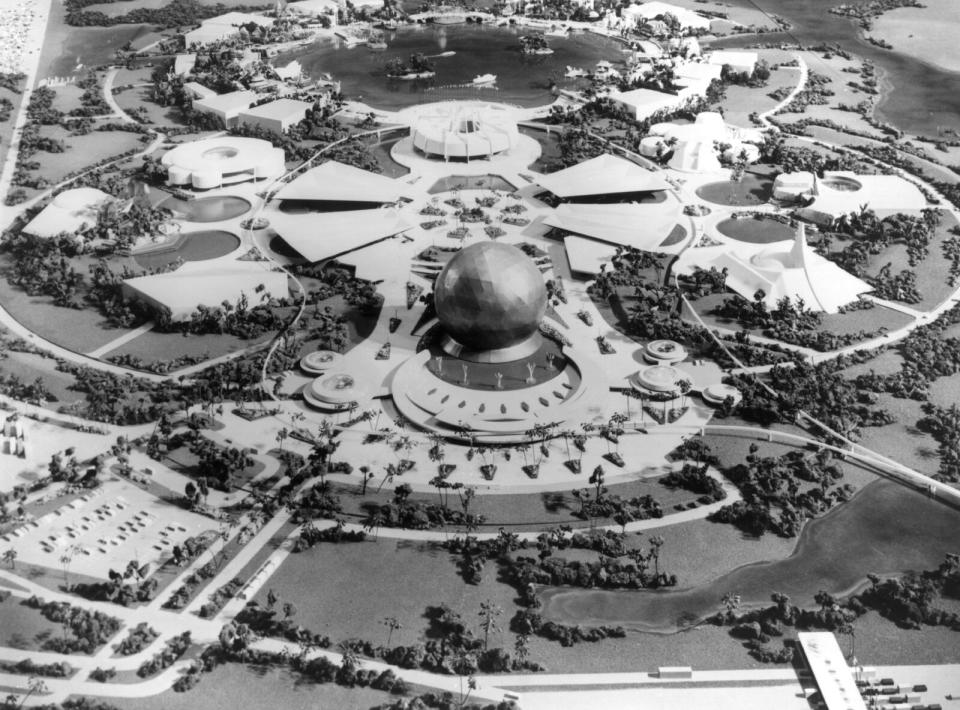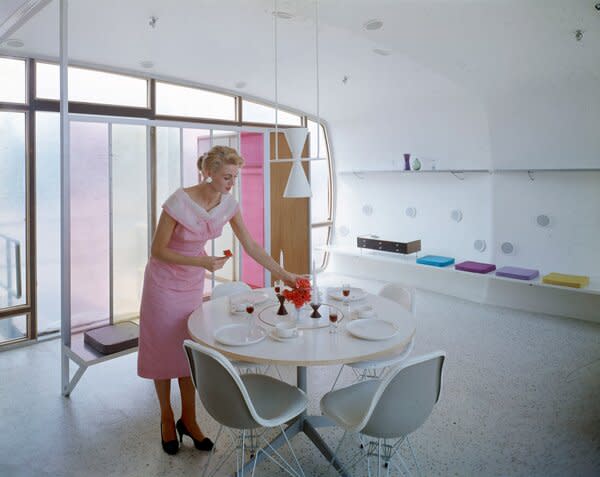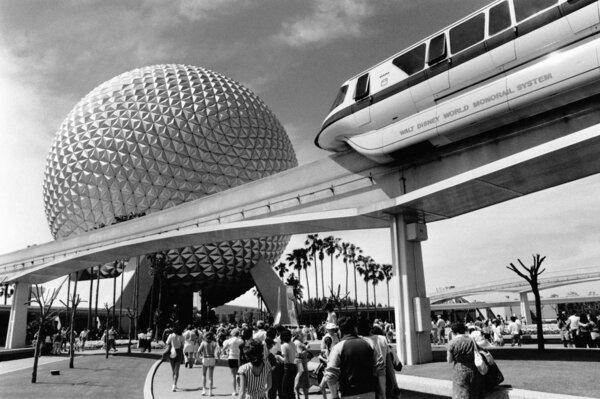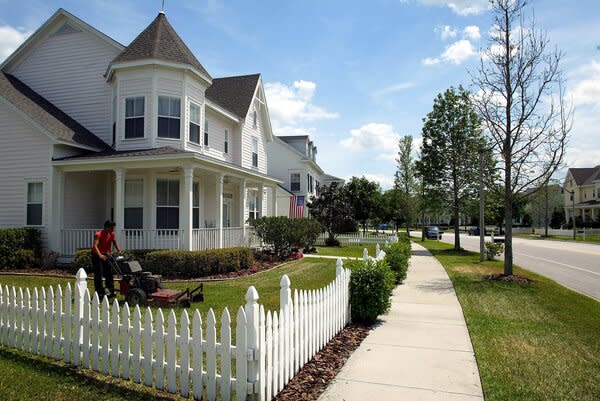Why Is Disney So Obsessed With Housing?
- Oops!Something went wrong.Please try again later.
A century after its founding, the cultural behemoth still has its founder’s fascination with utopia and new urbanism at its core.

In the Coachella Valley, a new world is taking shape.
It’s not a particularly large world—its designers and builders envision it will be oriented around a lively town center, where kids ride bikes and vendors offer artisan wares for sale to neighbors who live in single-family homes and designated townhouses for people 55 years and older. The entire community will gather at spots like a man-made lagoon (with private beaches, of course) and a clubhouse finished not by interior designers but by Disney Imagineers, for this new world is a Disney World.
Cotino Storyliving by Disney is a planned community affiliated with the century-old entertainment and culture behemoth, and its future residents, the company suspects, will want to live there for that very reason. Disney staff operating Cotino’s public spaces will be known, just like its theme park employees, as "cast members," and homeowners will be able to play pickleball in the shadow of a building meant to resemble one that appears in the (Disney-owned) Pixar film Incredibles 2.
Walt Disney had a particular knack for world-building, and he spent a great deal of time thinking about the future—specifically, what life there might look like. When his namesake animation studio expanded into the amusement park industry in the 1950s, the first park, Disneyland in Anaheim, California, was designed as a series of themed sections with names like Fantasyland and Frontierland. Many of the attractions explored utopian possibilities: Would homes of the future be made of plastic? Would people live where they worked, in neatly organized miniature cities where everything you needed existed within walking distance? But his vision didn’t stop there. Indeed, Disney’s fascination with futurism and ideals of new urbanism manifested in later years as actual housing endeavors from the company, where people could do more than just visit—they could live.
Disney’s first foray into housing wasn’t, strictly speaking, Disney-fied at all. Tomorrowland, Disneyland Park’s midcentury idea of what the world might look like in 1986, had been something of a flop—due to a tight budget, the 1955 space was heavy on corporate sponsors. (Many of its now-famous attractions, like Space Mountain, weren’t built until decades later.) From 1957 through 1967, Tomorrowland played host to Monsanto’s House of the Future, where visitors could marvel at ideas for newfangled home appliances like microwave-style ovens (now a fairly standard modern convenience) and movable bathroom sinks (those, we still don’t really have). Nearly 20 million Disney visitors passed through the attraction before it closed. But like the model kitchen that played host to a famous debate between Vice President Richard Nixon and Soviet leader Nikita Khrushchev (Khrushchev missed the chance to see the House of the Future when he visited America in 1959 and his Disneyland trip was canceled for security reasons), by the late 1960s, much of the home seemed less futuristic and more realistic, especially in terms of its midcentury-modern, space-age aesthetic.
Toward the end of the ’60s, Walt Disney turned his utopia-hunting eye to central Florida, fed up with the kitschy motels and busy roads outside Disneyland that limited its further expansion. From the beginning of the Disney World project, the notion of housing at the sprawling Orlando complex was part of the narrative, with the company proposing a model housing community for Disney workers, who would get around via a monorail system based on the one at Disneyland. Included in the original Disney World plans was the Experimental Prototype Community of Tomorrow (EPCOT), which Disney described in a 1966 presentation to Florida legislators as a "planned environment demonstrating to the world what American communities can accomplish through proper control of planning and design." EPCOT’s homes and public spaces would be sleek, modern, and laid out in a circular pattern inspired by urban planner Ebenezer Howard’s Garden Cities of To-Morrow. Above all, the planned community would be clean. Disneyland developed an elaborate maintenance system run by "midnight warriors," a crew responsible for steam cleaning dirty concrete in the park and cleaning bathrooms every 15 minutes. EPCOT’s crew would take things a step further, using an automated vacuum system for collecting trash and building underground roads to keep streets free of car traffic.
But after Walt Disney, EPCOT’s champion, died in 1966, the company pivoted from the original utopian vision of the project. When EPCOT finally opened in 1982 (more than a decade after Disney World’s opening), it wasn’t as an experimental city but as a different kind of theme park, one where visitors could "travel around the world" without having to leave Florida, with the option to retreat to a Disney-branded hotel at the end of the night.
See the full story on Dwell.com: Why Is Disney So Obsessed With Housing?
Related stories:




